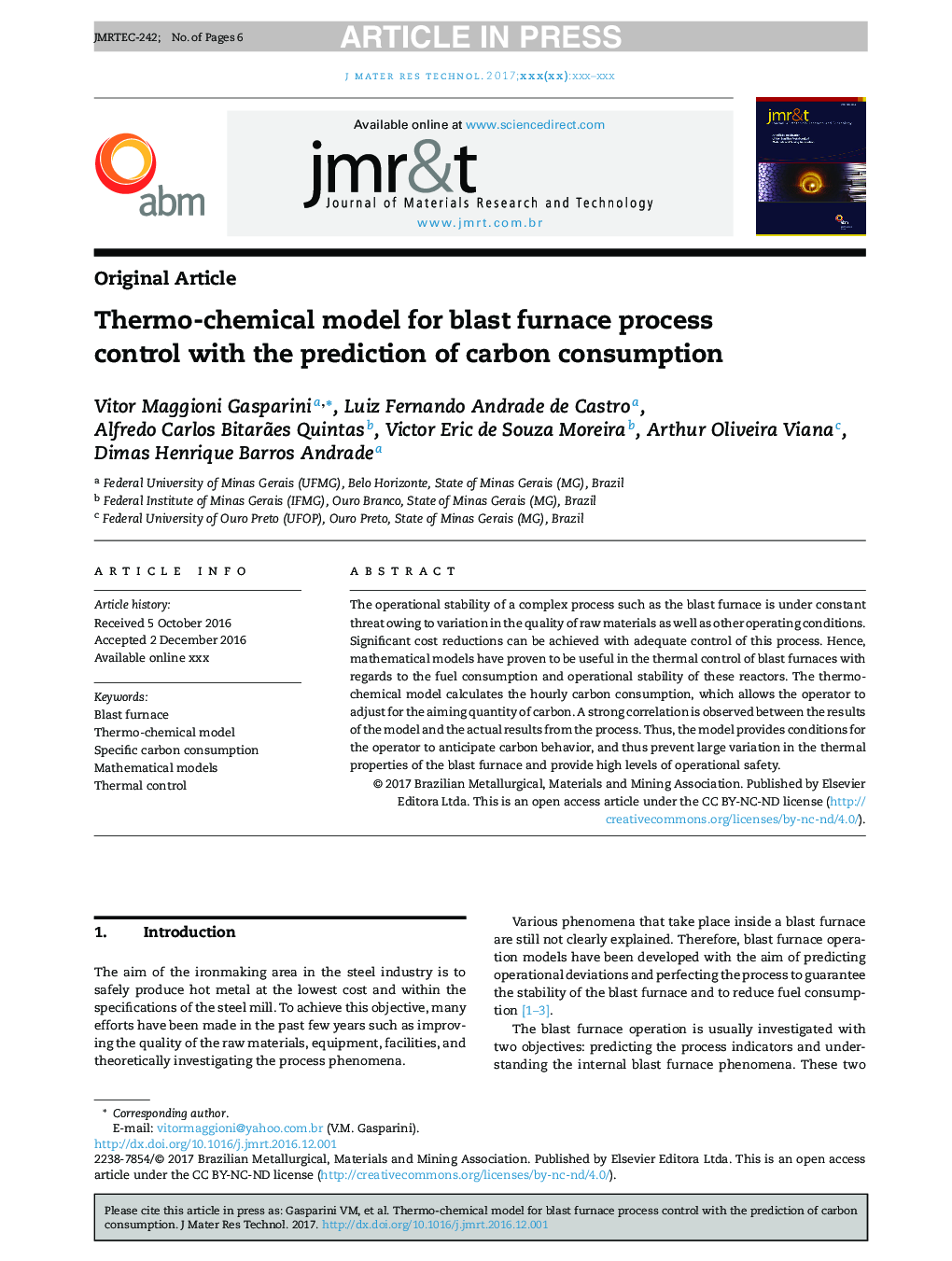| Article ID | Journal | Published Year | Pages | File Type |
|---|---|---|---|---|
| 7899362 | Journal of Materials Research and Technology | 2017 | 6 Pages |
Abstract
The operational stability of a complex process such as the blast furnace is under constant threat owing to variation in the quality of raw materials as well as other operating conditions. Significant cost reductions can be achieved with adequate control of this process. Hence, mathematical models have proven to be useful in the thermal control of blast furnaces with regards to the fuel consumption and operational stability of these reactors. The thermo-chemical model calculates the hourly carbon consumption, which allows the operator to adjust for the aiming quantity of carbon. A strong correlation is observed between the results of the model and the actual results from the process. Thus, the model provides conditions for the operator to anticipate carbon behavior, and thus prevent large variation in the thermal properties of the blast furnace and provide high levels of operational safety.
Related Topics
Physical Sciences and Engineering
Materials Science
Ceramics and Composites
Authors
Vitor Maggioni Gasparini, Luiz Fernando Andrade de Castro, Alfredo Carlos Bitarães Quintas, Victor Eric de Souza Moreira, Arthur Oliveira Viana, Dimas Henrique Barros Andrade,
